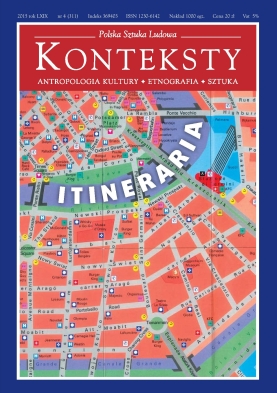Wątki mistyki żydowskiej w twórczości Anselma Kiefera
Motifs of Jewish Mysticism in the Works of Anselm Kiefer
Author(s): Jan SłoniewskiSubject(s): History, Fine Arts / Performing Arts
Published by: Instytut Sztuki Polskiej Akademii Nauk
Keywords: Anselm Kiefer; anthropology; art
Summary/Abstract: Recently, the oeuvre of the German artist Anselm Kiefer, brimming with references to historical events, Germanic, Nordic, Egyptian, and Middle Eastern mythology as well as assorted religions features intensified interest in Jewish mysticism. The intention of the author of this article is to decode the artist’s particular works explicitly referring via the title or the visual stratum to ideas derived from the written sources of the Kabbalah (The Book of Creation, Etz Chaim) as well as those preceding them (Hekhalot). Particular conceptions of Jewish mysticism present in the works of Anselm Kiefer – the journey across seven celestial palaces and communing with the Throne of God, His emanations (Sefirot), the female element (Shekhinah), the Tree of Life, the pre-catastrophe (shattered vessels), God’s withdrawal (tzimtzum) and the rectification of the world (tikkun) – comprise the structural axis of the text and were presented upon the basis of works by Gershom Scholem. A discussion about successive mystical ideas is accompanied by matching them with the artist’s concrete works. The author also proposed to insert into the context of Jewish mysticism those of Krieger’s works that originated before the artist became interested in Judaism as well as those, which literally referred to cultural circles other than the Judaeo-Christian one (e.g. the myth of Osiris and Isis). At the same time, the analysis refers to such themes as material (e.g. lead). The author perceives the presence of the Kabbalah shevira – a mystical catastrophe – in a considerable number of the artist’s works referring to destruction, including those evoking the Holocaust and thus opposing the universally held view linking Kiefer’s oeuvre with a readiness to work through the traumatic lineage of the German nation.
Journal: Konteksty
- Issue Year: 311/2015
- Issue No: 4
- Page Range: 184-193
- Page Count: 10
- Language: Polish
- Content File-PDF

